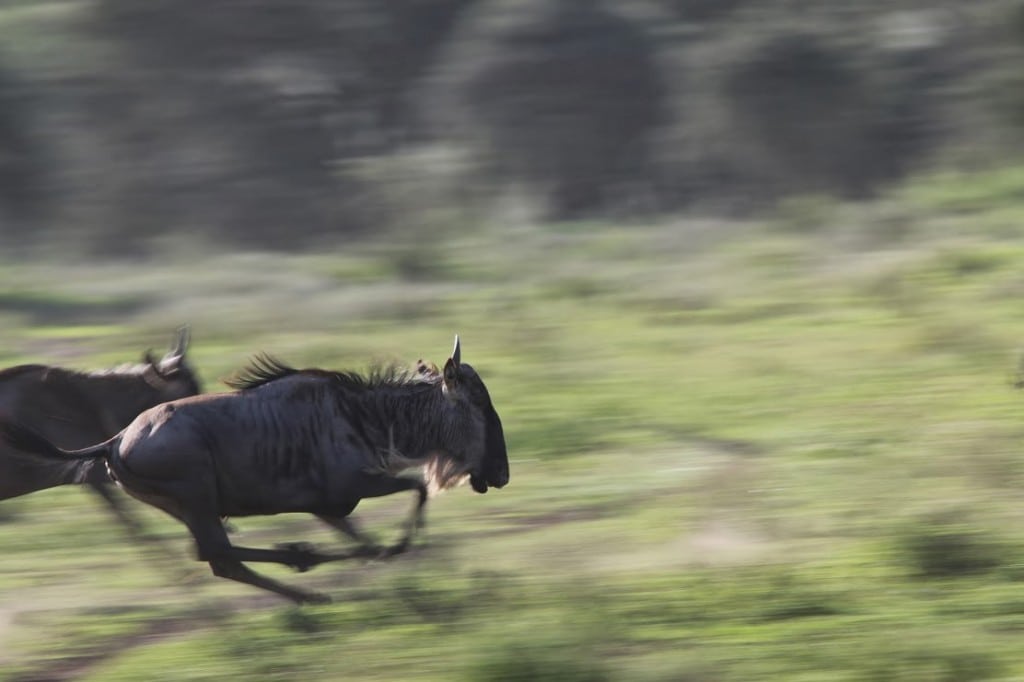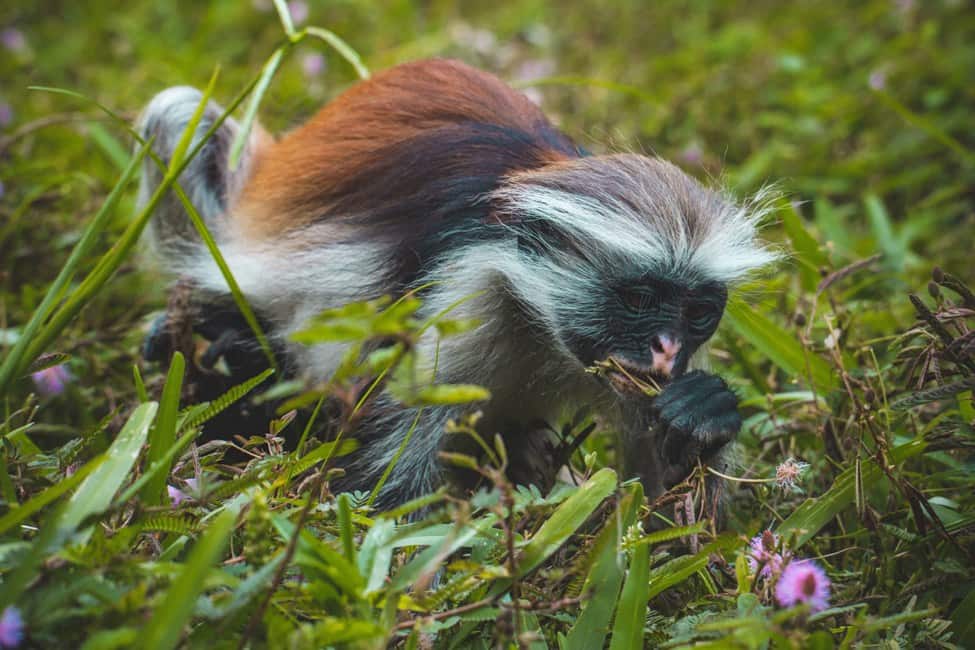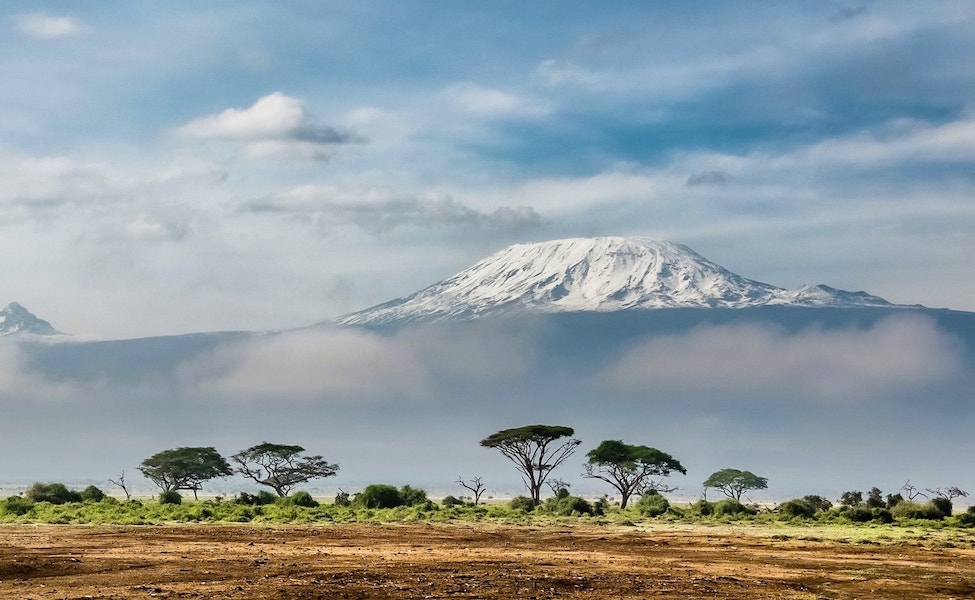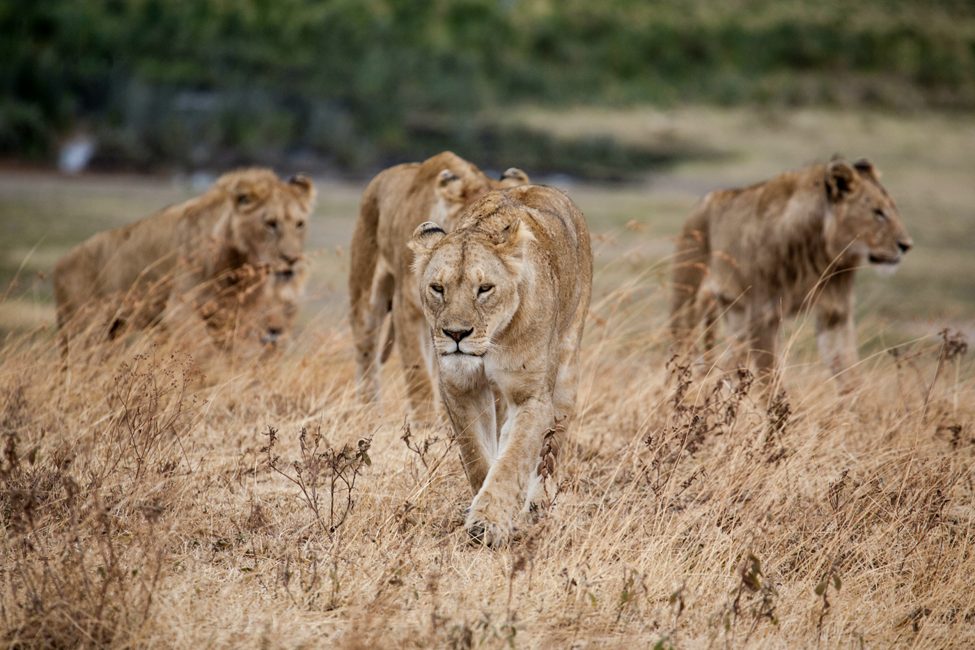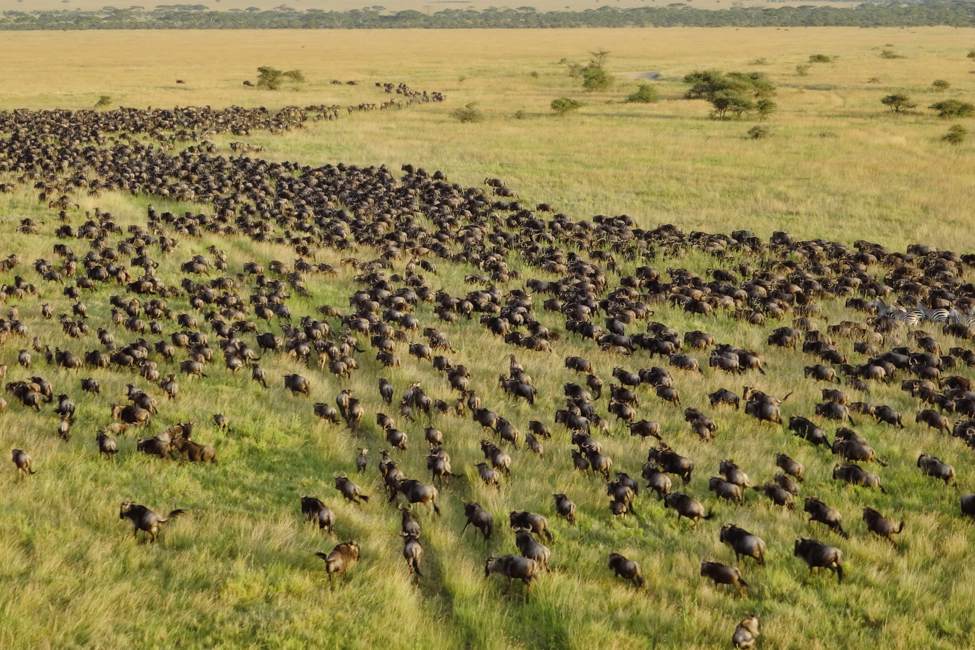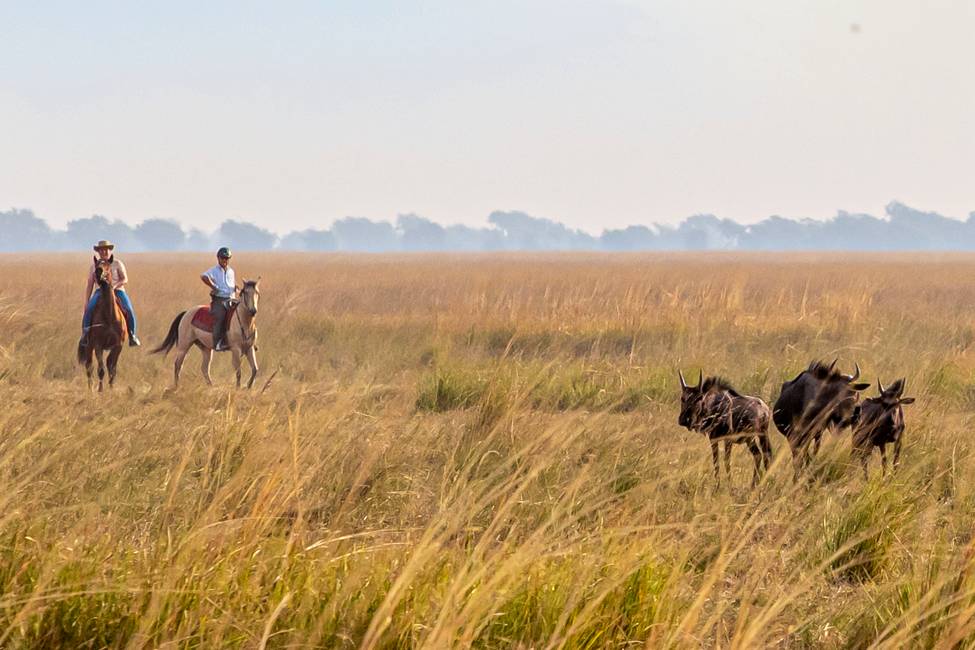Wildebeest run over the Serengeti plains. Photo taken by Tony Raab on an Ujuzi safari.
Serengeti National Park: What to Know Before You Go
It was a sunny November day as we watched a group of Thompson’s gazelles blissfully grazing grasses made thick and green by spring thunderstorms. Two cheetahs stood nearby, still as statues as they watched a single gazelle straying to the edge of the herd.
Soon, the cheetahs began to move, freezing after each step. Their movements were so subtle that the nearby gazelles remained oblivious to the cats’ presence.
After several minutes of careful creeping, the cheetahs pounced.
The gazelle never had a chance. It went down in one quick motion, killed almost instantly.
We felt bad for the gazelle, but were lucky to see not just one, but two cheetahs carry out a successful hunt in the rolling hills of the Serengeti. Over the ensuing half hour, we saw even more animals as vultures and spotted hyenas gathered around, hoping to feast on the cheetah’s quarry.
The Serengeti holds East Africa‘s most famous wildlife park, spread over 5,700 square miles of vast grass plains, dramatic granite outcrops, and bustling woodlands in Tanzania. Serengeti National Park is home to the Big 5, as well as giraffes, zebras, hippos, and an astonishing variety of antelopes and birds. Through much of the year, it hosts the annual wildebeest migration from Northern Tanzania and into southern Kenya—the largest overland migration in the world.
No wonder Serengeti National Park is recognized as a World Heritage Site by the United Nations. It is part of the even larger Serengeti ecosystem, which spreads across 12,000 square miles to include much of the Ngorongoro Conservation Area and Loliondo Game Control Area in Tanzania, the Masai Mara in Kenya, and a number of private reserves.
Read on to learn more about:
- The wildlife of the Serengeti
- What makes each region of the park unique
- When to visit
- What to do when you’re here
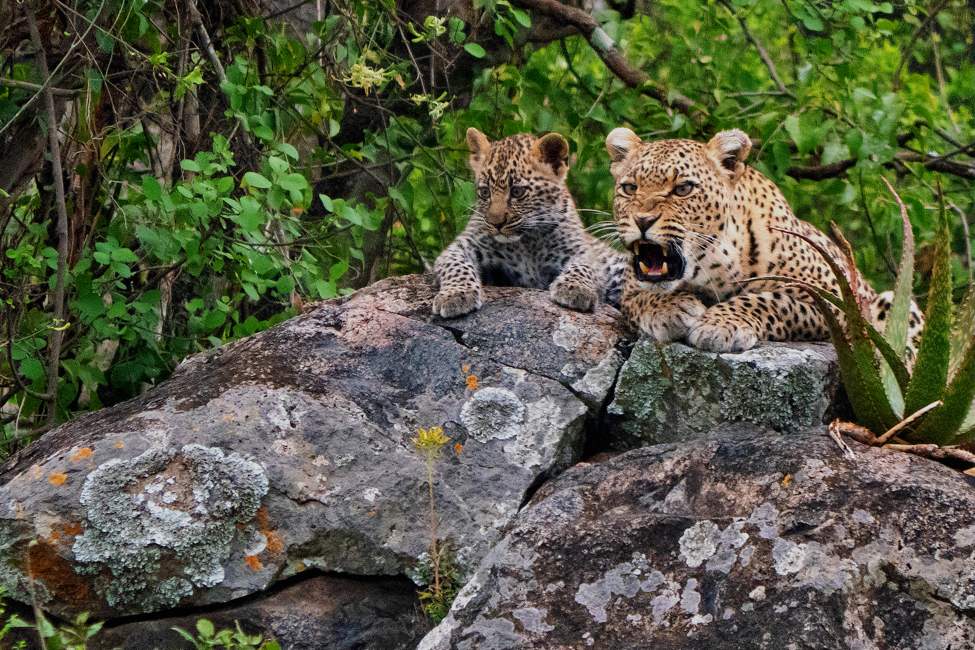
A leopard and cub guard a kopje in Serengeti National Park. Photo by Jay Galvin.
Wildlife of the Serengeti
The wildlife of the Serengeti is why it is often considered the crown jewel of Tanzania’s northern safari circuit. Here, you can see up to 70 large mammal species and 500 kinds of birds. In addition to following wildebeest and zebras in the Great Migration, look for predators like lions, leopards, spotted and striped hyenas, and cheetahs. You might even find a rare African wild dog—just a few packs live in the park.
Smaller carnivores of the Serengeti include the black-backed jackal, bat-eared fox, golden wolf, caracal, serval, African wildcat, honey badger, African civet, common genet, and striped polecat.
Wherever you are in the Serengeti, you’re likely to run across a plethora of hooved plant-eaters. They range from rabbit-sized dik-dik antelopes to enormous giraffes. Grant’s gazelles, elands, waterbucks, and topis are just a few of the antelopes that live in the national park.
Along rivers, you’re likely to spot a few hippos and perhaps a crocodile or Nile monitor. If you’re lucky, you may even see a black rhino—fewer than 100 live in the park. Ground pangolins live in the Serengeti, as well, but are rarely spotted.
Monkeys are concentrated in the forested areas along the Grumeti River in the northern and western areas of the park.
What Ujuzi Travelers Say
I really can’t pinpoint our most favorite experience of the Serengeti National Park. There are so many to choose from, from seeing our first elephant to our last giraffe. The hot air balloon was breathtaking. Seeing the animals from the sky was spectacular.
Hands down, my favorite experience was the balloon ride. It all started with the ride to the launch site. We saw an amazing amount of animal activity that we didn’t see during the day. From the moment that we were picked up to the end of the wonderful brunch, it was a fabulous experience.
Where to begin? I guess my favorite memory happened the last day in the Serengeti when we spotted and followed a leopard around for about 45 minutes. … What made the Serengeti special was a combination of the animals, the incredible lodging, the food, and especially some of the nicest people I’ve ever met in terms of staff and drivers.
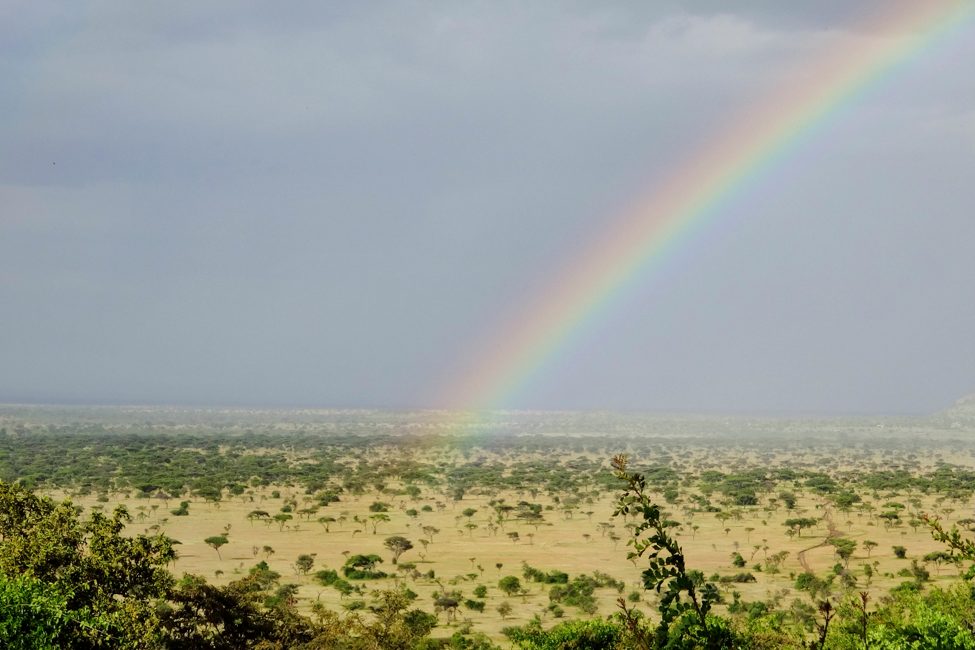
Rainbow over the Serengeti. Photo taken by Tony Raab on an Ujuzi safari.
Many Places in One Park
The Serengeti is so huge that it is difficult to make generalizations about the entire ecosystem. Below, we talk about the characteristics that set each area of the park apart.
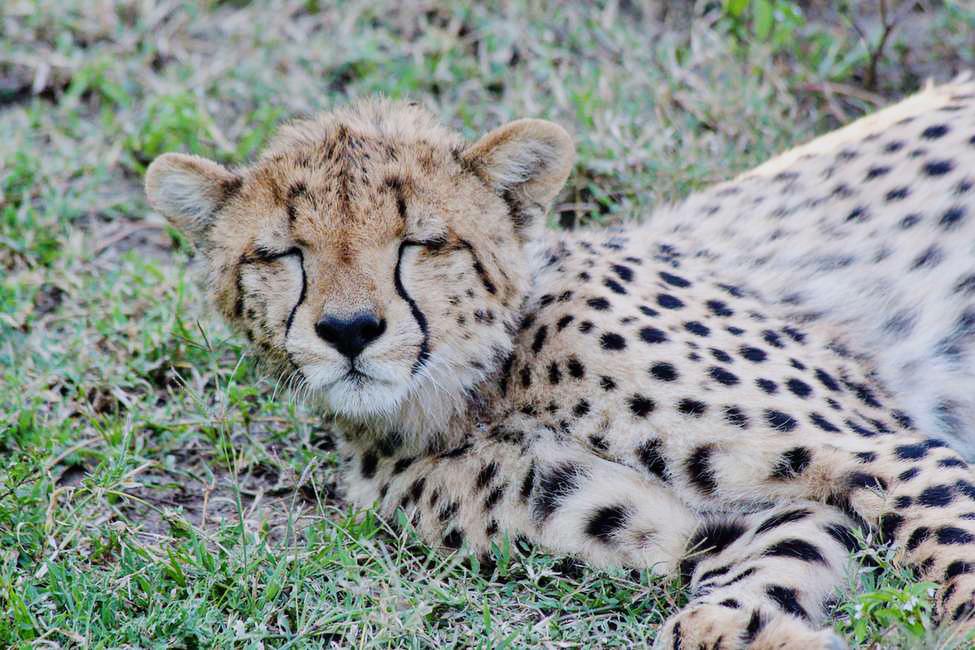
A cheetah relaxes in the short grasses of the Serengeti. Photo taken by Ellen Wilson on an Ujuzi safari.
Southern Serengeti
The image of acacia trees on a vast grassland epitomizes Africa for many, and the southern Serengeti is where you’ll find it. Here, you’ll experience firsthand the meaning of “Serengeti,” whose name is derived from the Maasai word for “endless plains.”
Highlights include the area around Lake Ndutu, a region that has attracted humans for millennia. This saline lake is dotted with flamingos during the green season. Up to 400 other bird species can be found in the area, including the beautiful paradise whydah. Every February and March, hundreds of thousands of wildebeest gather near Lake Ndutu to give birth to their young.
Susan Daniel visited the Ndutu region on a safari with Dickerson Park Zoo and Ujuzi African Travel during the Great Migration. “The experience was fantastic,” she said. “The sight of the wildebeest and zebras was mind-boggling.”
The Kusini Plains, also in the southern Serengeti, has both savanna and woodlands. Its best area for wildlife spotting is the ‘Kusini Crater’—not a crater at all, but rather a grassy plain surrounded by acacias so dense they seem to form a wall. Cheetahs, lions, Cape buffaloes, caracals, leopards, elephants, giraffes, striped hyenas, and migrant storks are some of the animals you might see here.
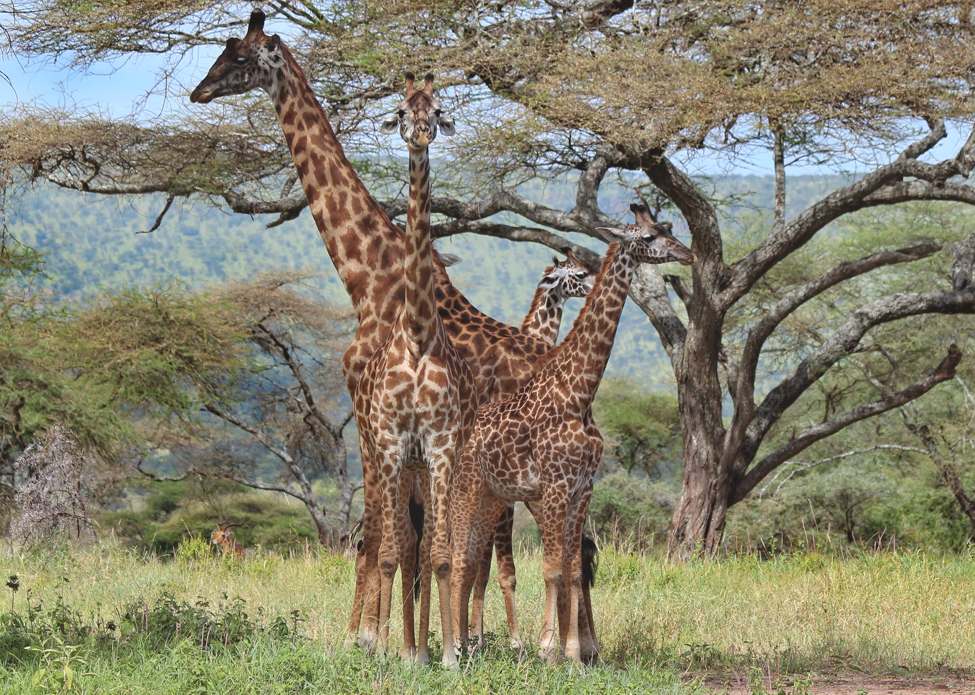
A family of giraffes take a break from eating this tree’s canopy to rest in its shade instead. Photo taken in Serengeti National Park by Ellen Wilson on an Ujuzi safari.
Central Serengeti
The Central Serengeti encompasses the world-famous Seronera Valley, which is known for its prime wildlife-viewing opportunities. This picture-perfect landscape is characterized by endless stretches of savannah-covered open plains, interspersed with acacia woodlands and rocky outcrops of granite known as kopjes (from Afrikaans for “little heads”) or inselbergs (from German for “island mountains”).
These outcrops are favorite hangouts for klipspringer antelopes and yellow-spotted rock hyraxes, which look a bit like groundhogs but are more closely related to elephants. You might also spot red-headed agama lizards basking on the rocks, the males occasionally doing rapid push-ups to flash their colors and claim territory.
The Central Serengeti provides an ideal habitat for a variety of wildlife, including all three African big cats—cheetahs, lions, and leopards—and the rest of the Big Five, as well as giraffes, impalas, waterbucks, hippos, hyenas, jackals, servals, and much more.
“The Serengeti is such a wide open space to view animals,” said Julia Hall, who stayed in the Maru Kopjes area of the Central Serengeti during a safari with Oklahoma City Zoo and Ujuzi African Travel. “Our tented camp was the perfect place to stay for this adventure. You feel immersed in the environment. Hearing the animals, especially the lions, during the night was a surreal experience.”
Maru Kopjes is home to the only remaining population of black rhinos in the Serengeti. Nearby, you can view paintings made by Maasai herders in caves where they sheltered their cattle. Stunning candelabra trees dot the landscape, and when they are in bloom, the yellow flowers at the end of the green branches make them look like a collection of lit candles. The saline Lake Magadi attracts flamingos and other shorebirds.
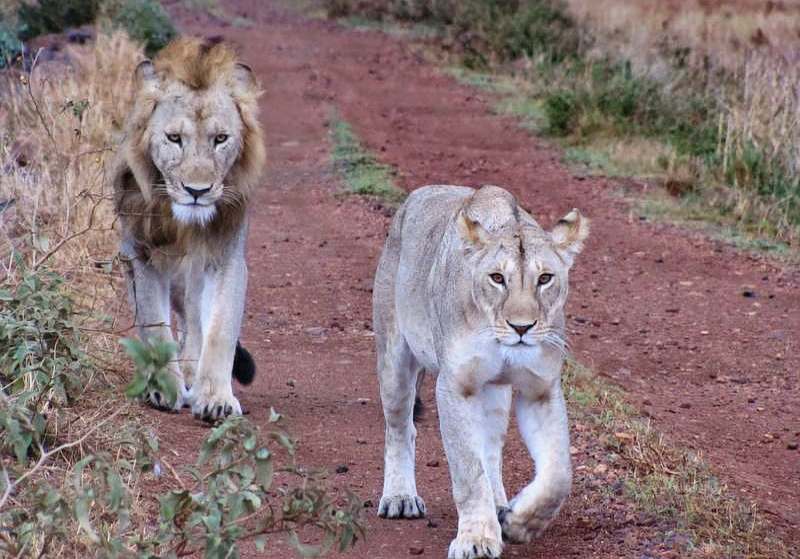
Lions trail a zebra herd in Serengeti National Park. Photo taken by Kathryn Kingsbury on an Ujuzi safari.
Eastern Serengeti
The plains of the Eastern Serengeti offer some of the best cheetah viewing in Africa. Lions and leopards are also abundant here, and the wildebeest migration passes through this area twice annually. Watering holes surrounded by stands of yellow-barked fever trees provide unrivaled year-round access to fantastic wildlife.
Take a trail to the top of Naabi Hill, a granite kopje, for an incredible view of the Serengeti plains. Or visit the Gol Kopjes, which has the highest wild cheetah concentration in the world. You also have an excellent chance of seeing lions sunning on the rocks and Thompson’s and Grant’s gazelles enjoying the lush grass here.
Just east of Serengeti National Park in the Ngorongoro Conservation Area lies Olduvai Gorge, home to one of the world’s most important paleoanthropological sites. At the Olduvai Gorge Museum, you can see some of the fossils and ancient tools discovered here that give tremendous insight into human evolution.
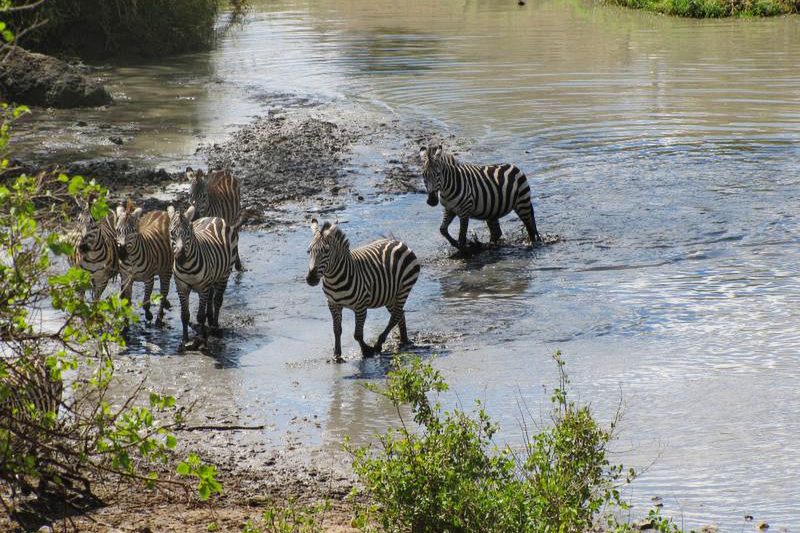
Zebras cross a shallow river in the Serengeti. Photo taken by Kathryn Kingsbury on an Ujuzi safari.
Northern Serengeti
The vast, rolling hills of the Northern Serengeti are dotted with open acacia and riverine woodlands. Every year, a million migrating wildebeest attempt to cross the Mara River in search of greener pastures, but not all make it past the rushing waters and waiting crocodiles.
The Lamai Triangle, just north of the Mara River, hosts much of the Great Migration from July to November and has fewer tourists than neighboring Masai Mara Game Reserve in Kenya.
The Lobo Valley is another notable area of the Northern Serengeti, with its dramatic landscape fed by the Gaboti and Bololgedi Rivers. Huge herds of wildebeest and zebras travel northward through here in June and July and then southward in November. The Lobo Valley is home to the largest concentration of elephants in the Serengeti and has one of the park’s biggest lion prides. You can also see cheetahs and leopards here—often all three big cats are sighted on the same day!
Other commonly spotted wildlife include Cape buffalos, zebras, gazelles, impalas, and giraffes.
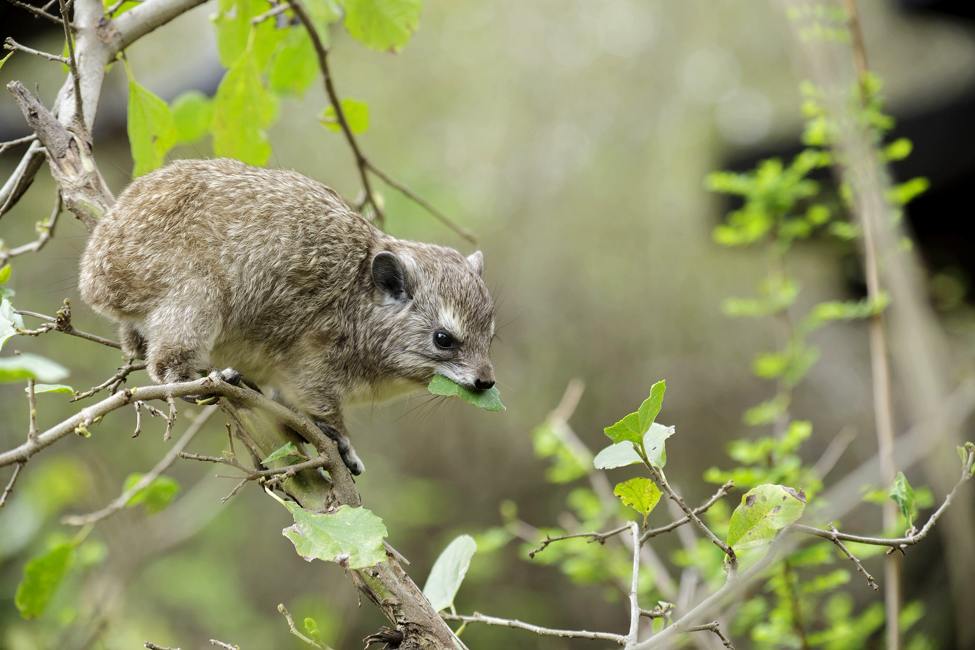
A hyrax snacks on leaves from a large shrub. Photo taken in Serengeti National Park by Thomas Fuhrmann.
Western Corridor
Intersected by the Grumeti and Mbalageti rivers, Serengeti’s Western Corridor stretches almost to Lake Victoria. Millions of wildebeest pass over the corridor’s black clay plains from May to July.
Extensive woodlands make this area of the Serengeti hospitable to several species of monkey, including patas monkeys, vervet monkeys, Eastern black-and-white colobus (aka mantled guereza), olive baboons, and yellow baboons.
Just over the border are several private reserves: Grumeti Game Reserve, Ikorongo Game Reserve, and Maswa Game Reserve. Here, you can partake in activities that are restricted inside the park, such as night game drives, walking safaris, and picnics in the bush.
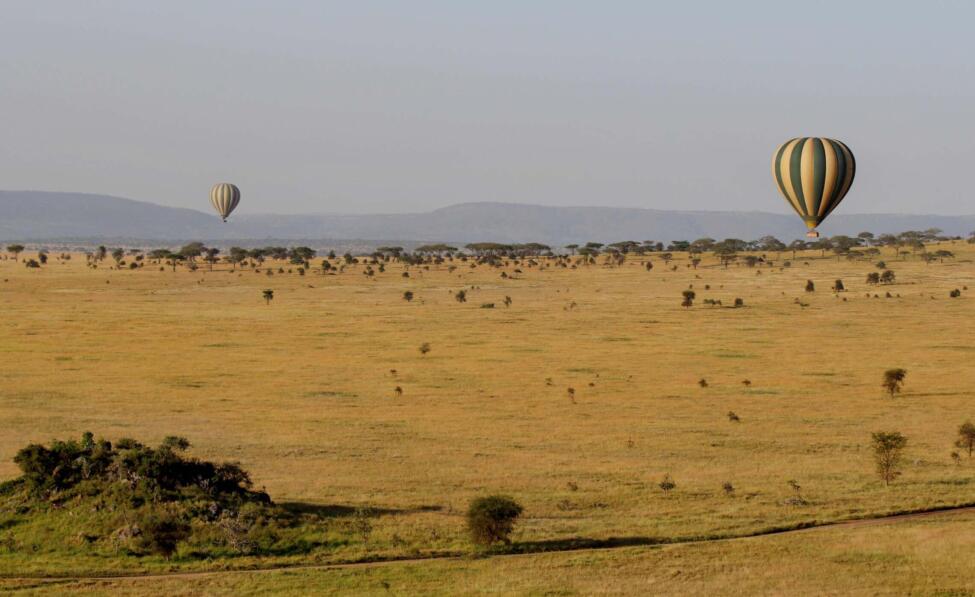
Hot air balloons rise over the Serengeti. Photo taken by Ellen Wilson on an Ujuzi safari.
What to Do in the Serengeti
Besides following the wildebeest, popular activities in the Serengeti include game drives, birdwatching, and hot air ballooning over the spectacularly scenic terrain. Short walks are a possibility on some marked trails within the national park, while longer walking safaris and horseback safaris are an option in neighboring private reserves.
And don’t forget stargazing! The lack of electrical lights in the Serengeti makes for amazing night skies. Study the constellations with your bare eyes, or book your stay at a lodge or camp that offers access to a telescope.
Ujuzi traveler El Nault saw the Milky Way when visiting the Serengeti and described it this way: “From one horizon to the other, it was as if powdered sugar had been blown across the heavens—there were so many stars. It was beyond breathtaking. My spirit felt so connected to this vastness.”
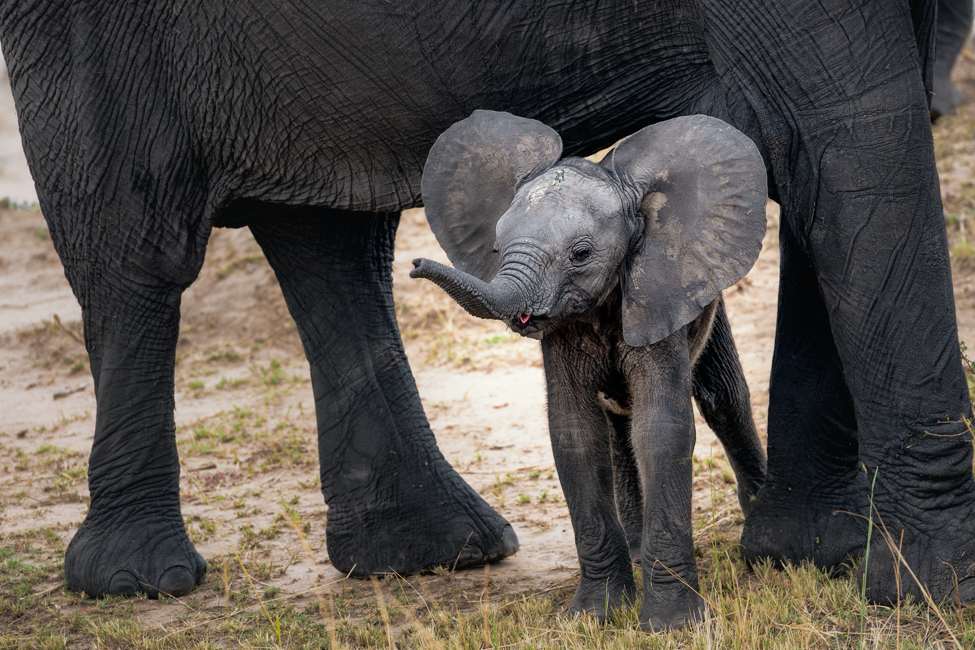
A baby elephant practices moving its trunk. Photo taken in the Serengeti by Hu Chen.
Visiting Serengeti National Park
When to visit Serengeti National Park depends on what you want to see and the kind of weather you’d like to experience.
Weather in Serengeti National Park is usually warm and dry, with two rainy seasons. The heavier rains run from March to May, and while it rarely rains all day, it does tend to rain every day. The bulk of the “short rains” happen in November, but may start in October and end in December.
During rains, areas of northern and western Serengeti National Park can be difficult to traverse. Central and Southern Serengeti experience lighter rains, and the area around Ndutu in the south is popular to visit from November to May because of the large concentrations of animals that gather there.
If you want to see the Great Migration, make sure to time your visit according to the movements of the herds! Ujuzi can help you plan your visit for the best chance of seeing the migration.
Ready to plan your trip, or just want to find out more about the possibilities? Contact Ujuzi today.
Explore the Serengeti on These Safaris
Great Wildebeest Migration Map
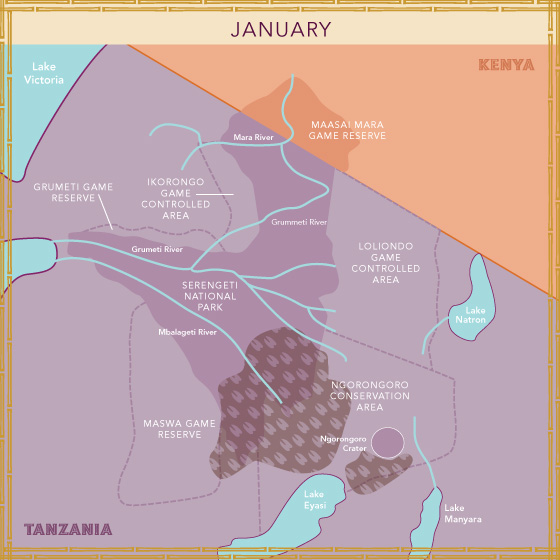
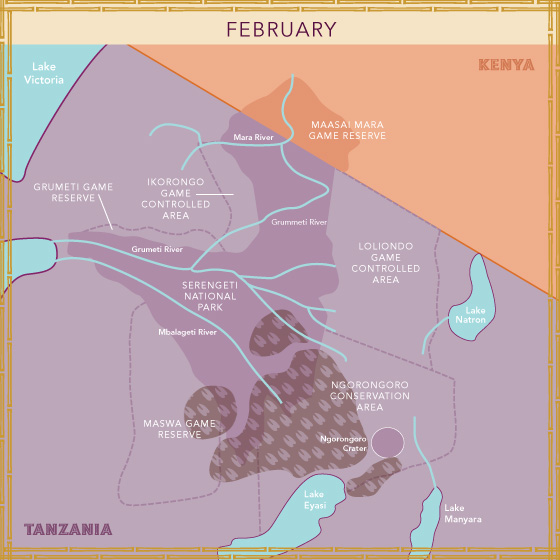
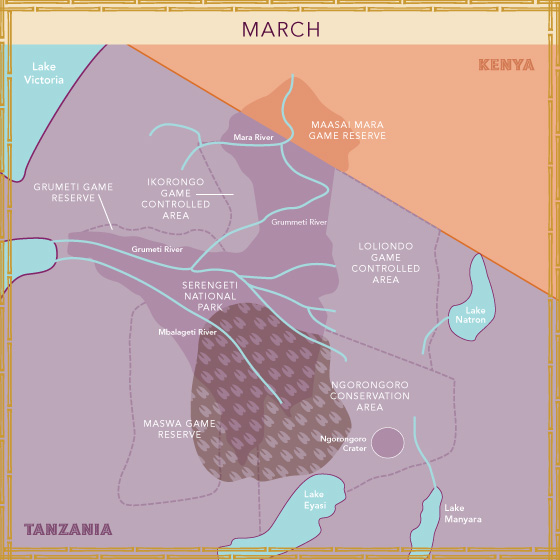
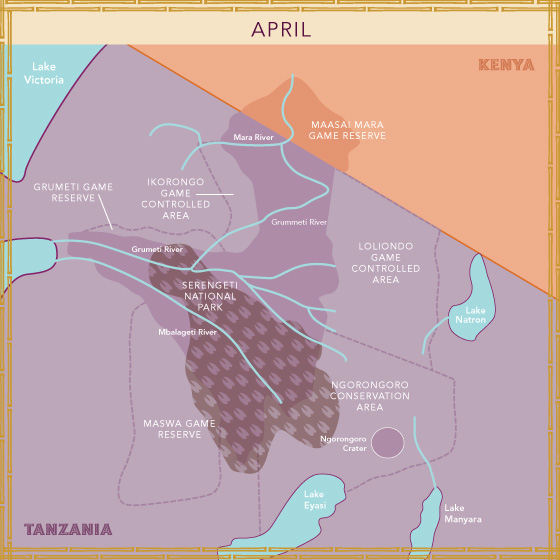
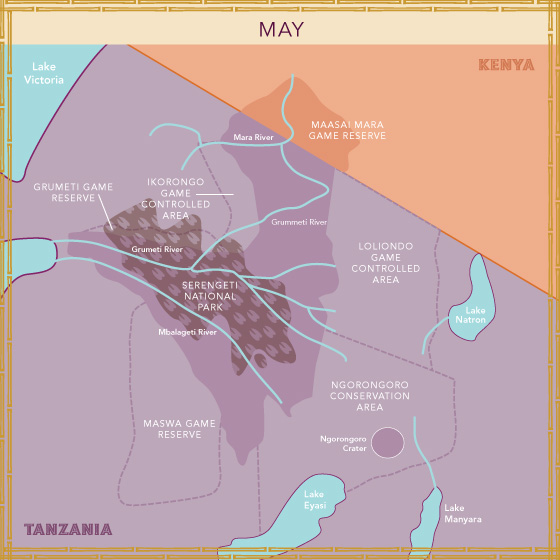
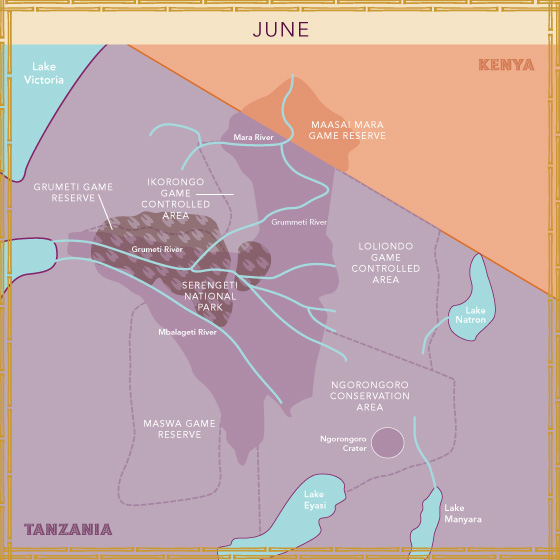
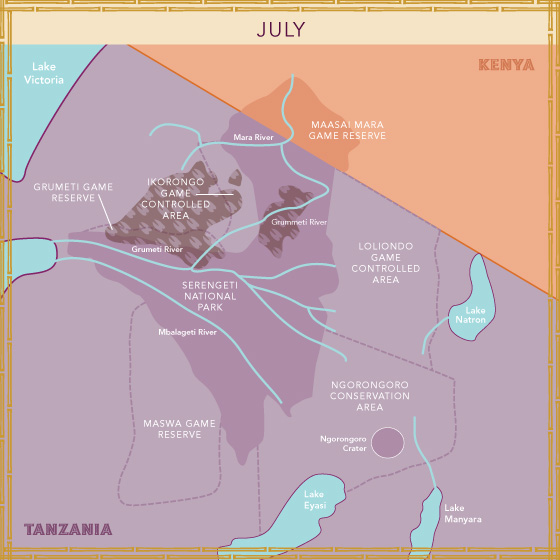
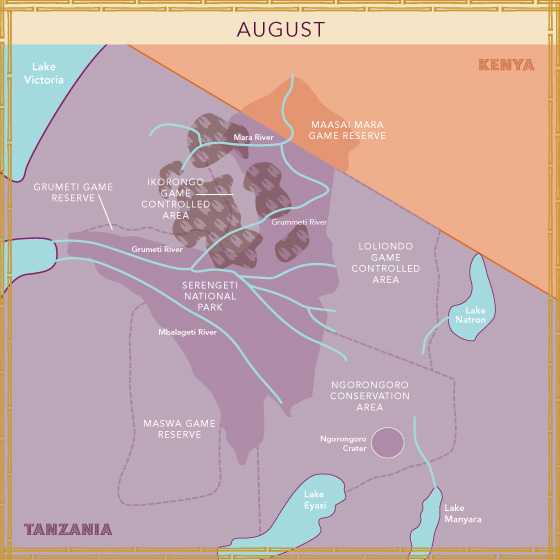
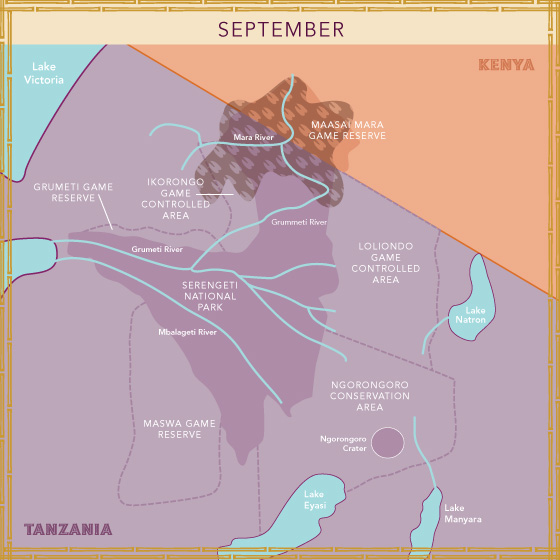
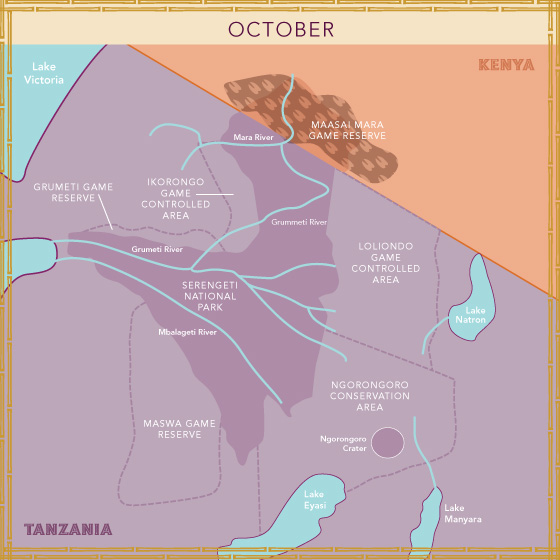
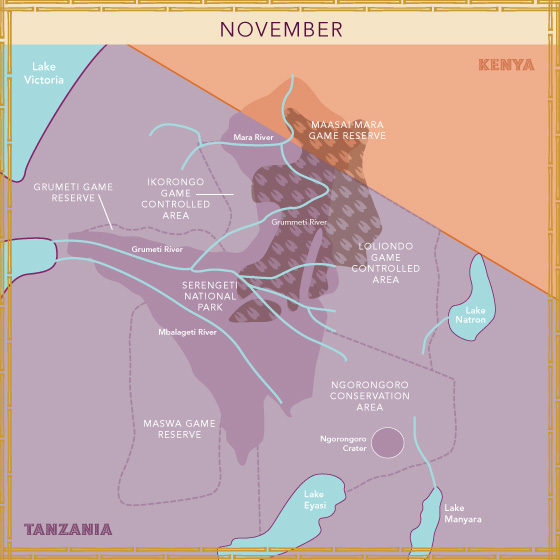
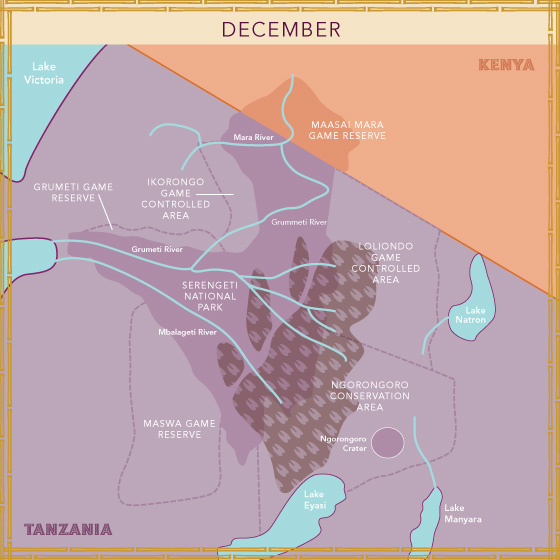
The largest and longest overland migration on earth, the Great Wildebeest Migration is a year-round trek taking two million wildebeest and countless zebras and antelope from the southern Serengeti to the Maasai Mara and back.
Select a month to forecast the wildebeests’ route, then contact us to schedule your Great Wildebeest Migration safari.
Sign up for the Ujuzi Newsletter!
From top travel tips to innovative safaris and conservation movement, get inspired to plan your next African safari!
By submitting this form, you are consenting to receive marketing emails from: . You can revoke your consent to receive emails at any time by using the SafeUnsubscribe® link, found at the bottom of every email. Emails are serviced by Constant Contact


